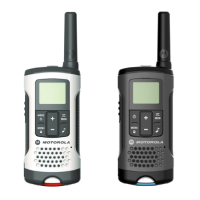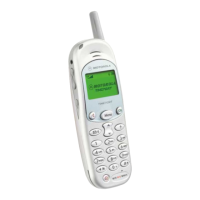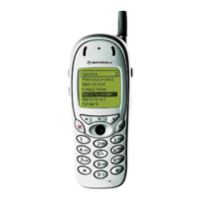Topaz T2688/T200, T2988/T205 L3 Circuit Description
9
Motorola Proprietary Information
40. The processed information is sent along the Serial Base-band interface, and is fed into
a register before being differentially encoded. The encoded signal is then applied to a
Sin / Cosine look up ROM where the GMSK TX I & Q ‘words’ are generated
(interpolation ratio of 16)
41. The I & Q words are the sampled at 4.33Mhz (16 X 270Khz) and applied to a high
speed 8 bit digital to Analogue converter, any image frequencies created during this
process will be removed by a subsequent Bessel Filter.
42. The burst length will be determined by the pulse width of BENA Pin 71 (when
BULON is active Pin 74, actual effective transmission burst length = BENA +32 ¼
bits)
43. Calibration of TXI & Q paths can be set during the BCAL timing window.
44. The analogue information, is now sent from VEGA Pins 57 – 60, to the TX / RX IC
on the TX I & Q lines Pins 13 – 16
45. The signal routing for the TX I & Q through the TX / RX IC is as follows:
46. The TXI & Q signals are routed to 2 modulators. At the same time, from the
Varactor D601, the 540Mhz signal, as produced in RECEIVE, is injected into the TX
/ RX IC on Pin 33, the signal is then amplified and divided by 2 (for GSM).
47. The 270MHz is then fed into a band select switch, and onto a phase splitter / shifter
which contains a 90
o
offset circuit. The resultant signal is then fed into the 2
modulators to be modulated by the TXI & Q data.

